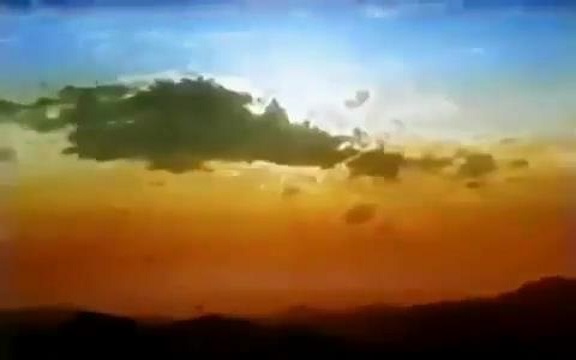Journey to the Seventh Planet
Sidney Pink
insisted to the end of his life that Journey to the Seventh Planet is a great
science-fiction film, and it is. The theme is nothing less than the fall of
man, conceived as an apologia for the scientific mind. “Justify our
leaving home”, André Breton says, in the tone of Orphée’s
public, “étonnez-nous”.
The apple, the
instantaneous garden of Eden, the created females, the
omniscient mind and the serpent are all in evidence. They all make sense, in a
way, but the plants are rootless, the girls are imaginary, the planet is ashen.
No heroic
explorer, certainly no scientist, could settle for this state of affairs. Our
astronauts blast off back to Earth, where conflict has raged over this film
since its release. Melchior says Pink botched it,
Pink says Arkoff botched it. The truth is Arkoff played a hunch, one should
think, and shaped the thing according to his lights. Possibly much was lost,
principally on the Danish production end in special effects, but the stylish
mind of Arkoff is not to be underestimated. What remains is to discuss the
dilemma of style.
It’s
principally addressed by Aage Wiltrup’s
cinematography, mainly keyed to primary colors, with a secondary component of complementaries. His in-camera effects are capital, as when
golden light is made to “fall” on Ingrid in her first appearance (a
first appearance of the Zhivago effect), ending in a close-up suffused with
pink light as the astronauts leave her presence. There is generally much play
with colored gels on the famously minuscule sets.
The erotic symbolism
that leads the explorers on includes the miniature of their rocket ship passing
globular planets against a painted backdrop. The interpolated giant spider is
on the order of a found object or readymade, and the film-scratches
representing ray-gun blasts remind the viewer, as Godard says of scratchy
prints in general, that he is watching a film.
One can read
every conceivable bit of criticism directed at Journey to the Seventh Planet,
from carping at its low-budget mysteries, which are profound, to sneers at the
girls, who are beautiful, to gibes at the astronauts’ admiration of
them...
The idea of an
environment prepared for Earthlings appears at the end of Kubrick’s 2001:
A Space Odyssey, as also that of a supermind,
which comes from Godard’s Alphaville, with antecedents in this
film and Strock’s Gog,
among others. There are certainly a lot of precedents for the girls from outer
space, from Cunha’s Missile to the Moon
and White’s Outer Space Jitters to Mizoguchi’s
Ugetsu Monogatari.
What this note is
trying to suggest is, almost impossibly, a film with stylistic difficulties for
the casual observer which reflect a deep perturbation of content. Arkoff
recognized, it may be, the sheer amusement value of the successive MacGuffins, such as the mysterious hole in the forest that
strips a stick bare, and he kept an even keel of suspense before the awful
mystery of the conclusion, when the giant brain with its single eye is
confronted by the astronauts, a scene which develops both horns of its dilemma
to an intensity allowing the grand sublimations of Godard and Kubrick.
“I asked
the editor,” says Gordon Douglas, “How does it look? And he said:
Fine. I said: Does it look honest? He said: As honest as twelve foot ants can
look.” Every step of Journey to the Seventh Planet is designed to
lead from image to image as such. This is exactly how King Kong is
constructed, and with persistence of vision will suffice for a definition of
cinema.
Finger on the Trigger

End of the Civil
War, Confederates hold Fort Grant in Oklahoma, demobilized Union cavalrymen
pass through on their way to New Mexico.
Cf.
Hawks’ Rio Lobo,
Guillermin’s El Condor,
Boetticher’s Westbound, McLaglen’s The
Shadow Riders.
“I’ve
seen dead men before. I’ve just been through a war.” The golden horseshoe. The Confederate
treasury. A bank in Southernville.
Indian territory (cp. Two Flags West, dir. Robert Wise).
A charming miprision leads the cavalrymen, some of
them, to believe the fort still in U.S. hands (cp. Night Boat to Dublin, dir. Lawrence Huntington).
Thus the
masterful screenplay, by the author of Julio Coll’s
Pyro. The structure
pivots on this misprision.
“How I know
you come back?”
“Because
I’m a thief. I couldn’t
resist that much gold.”
“Wait. We
talk more.”
“You should
have been a lawyer.” Blue skies, Spanish badlands for
the filming.
“I feel
like I’m trapped in a bank vault.”
“What a way
for a Scotsman to die!”
And then it’s
a question of “what
Confederacy,” the balls of St. Nicholas. Pink is especially good at
conveying the swift ferocity of an Indian attack with an antique flavor of the
primitive, the combination of symbols and metaphors at the climax might have
suggested Sherin’s Valdez Is Coming. The defense is not made at the fort but in the sacked
and ruined town.
Techniscope, Technicolor,
wardrobe by “the incomparable Vicky.”